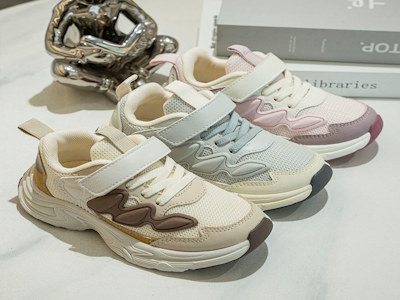Когда малыш делает свои первые шаги, это волнующий момент для всей семьи. Родители часто стремятся обеспечить ребенка всем лучшим, включая обувь. Многие традиционно выбирают кожаную обувь, считая её прочной, качественной и стильной. Однако современные исследования и рекомендации педиатров показывают, что кожаная обувь может быть не самым подходящим вариантом для первых шагов. В этой статье мы подробно рассмотрим, почему кожаная обувь не рекомендуется для малышей, начиная с анатомических особенностей детских стоп, заканчивая практическими советами по выбору оптимальной обуви.
Анатомия детской стопы и её развитие
Детская стопа – это не просто миниатюрная версия взрослой. Она находится в стадии активного формирования. В первые годы жизни кости стопы преимущественно хрящевые, что делает их гибкими и подверженными деформациям. Мышцы и связки ещё слабы, и стопа легко адаптируется к окружающим условиям. Именно в этот период правильная обувь играет crucial роль в предотвращении таких проблем, как плоскостопие, вальгусная или варусная установка стоп.
Кожаная обувь, особенно жёсткая и негибкая, может ограничивать естественные движения стопы. При ходьбе стопа малыша должна свободно сгибаться в области плюснефаланговых суставов, что способствует развитию мышц и координации. Жёсткая подошва и верх из кожи часто препятствуют этому, forcing стопу into unnatural positions. Это может привести к задержке моторного развития и increased risk of orthopedic issues.
Более того, кожаная обувь tends to be heavier than alternatives like textiles or modern synthetic materials. For a toddler who is just learning to walk, extra weight can make balancing more difficult and increase fatigue. Studies have shown that lightweight, flexible shoes allow children to walk more naturally and confidently, reducing the likelihood of falls and promoting better posture.
Воздухопроницаемость и комфорт
Another critical aspect is breathability. Children's feet sweat more than adults' due to higher metabolic rates and activity levels. Leather, while natural, often has poor breathability compared to mesh or other breathable fabrics. This can lead to excessive moisture accumulation, creating an environment conducive to fungal infections like athlete's foot or bacterial growth. In contrast, modern materials designed for children's shoes often incorporate ventilation technologies that keep feet dry and comfortable.
Comfort is paramount for little ones. Stiff leather shoes can rub against delicate skin, causing blisters and discomfort. This discomfort might discourage a child from walking, potentially delaying their physical development. Flexible, soft-soled shoes made from materials like cotton or specialized foams provide a barefoot-like experience, allowing sensory feedback from the ground, which is essential for developing balance and coordination.
Экономические и экологические соображения
Leather shoes are typically more expensive than other options. Given that children outgrow shoes quickly—often every few months—investing in costly leather pairs may not be practical for many families. There are affordable alternatives that offer better functionality for developing feet. Additionally, the production of leather has environmental impacts, including water usage and chemical treatments, whereas sustainable shoe options made from recycled materials are becoming increasingly available and better for the planet.
Рекомендации экспертов
Leading pediatric organizations, such as the American Academy of Pediatrics, recommend that for first walkers, shoes should be lightweight, flexible, and have a non-slip sole. They emphasize that the best shoe for a toddler is one that mimics being barefoot as much as possible. Leather shoes often fail to meet these criteria due to their rigidity and weight. Instead, experts suggest opting for shoes made from soft, breathable materials with ample toe room to allow for natural foot growth.
In conclusion, while leather shoes may seem like a premium choice, they are not ideal for babies taking their first steps. Prioritizing flexibility, breathability, and lightweight design will support healthy foot development and overall well-being. Parents should consider alternatives that align with modern pediatric advice to ensure their child's happy and healthy journey into walking.
This article is based on current research and expert opinions to help parents make informed decisions. Remember, every child is unique, so consulting with a pediatrician or orthopedist for personalized advice is always a good idea.


